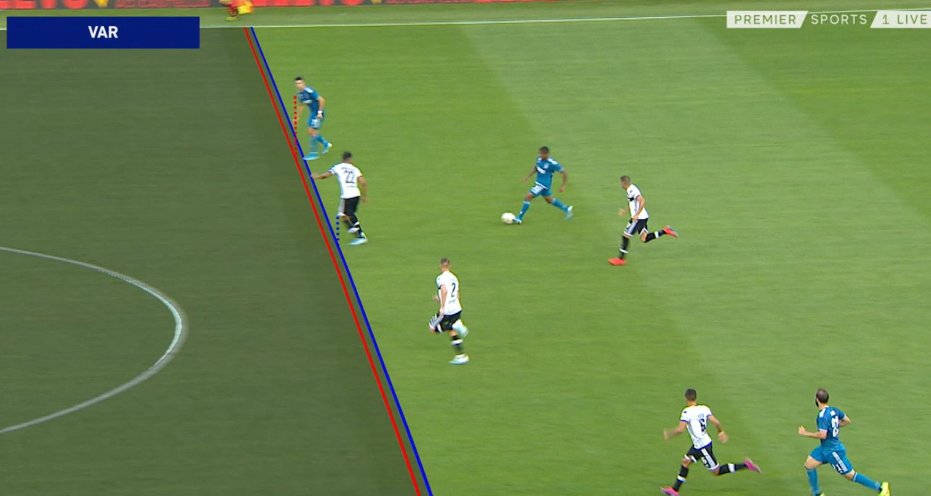This should explain how we've got to where we are now, and the issues behind various solutions.
But let's be clear at the start, offside will not change before next season.
This meant that offside decisions with VAR could be totally down to luck, depending on the position of the camera.
Hence, early in 2019 the 3D crosshair system arrived.
This enabled VAR operators to calculate the position of all players on the pitch accurately, creating a virtual offside line.
Hence, you get much greater accuracy on offside decisions.
This is difficult, because the key overriding consideration here is that a general law change will affect ALL of football, not just leagues with VAR.
Any change will affect all of football for a full season, so it has to be completely thought through.
Obviously, we just create a new "decision point" for people to argue over. But no solution can remove this.
It is crucial that VAR does not rule the Laws of the Game, which is why margin of error on tech may be the best option.
"Any whole part of the player’s body is onside, then it's onside"
First, we do not get rid of the marginal calls. They still exist, but they move back two feet. Players will still be off marginally.
Good at first, then you find that teams start to defend much deeper to negate being caught out.
Teams would defend free-kicks on the six-yard box every time to remove the space in behind.
We will find out in February what may happen.
It's because MLS stadia did not have enough cameras to make the previous "one line on a pitch" system viable across all of its grounds.
MLS had been testing it at the end of the 2019 season with a view to bringing it in for 2020. If the tech works, MLS will likely use it.
Referees HAVE to start using them. I doubt they will this season, but it is a key change.
That's clearly not working, is it.
The delays are extended because the VAR has to interpret what the ref has seen. With the monitors, this isn't necessary.
Obviously, long-term the live broadcast should be in all VAR grounds (IFAB doesn't allow it now). But A-League is leading the way in VAR transparency like this.
It's great.
The Virgil van Dijk handball in the goal move is only relevant if it is deliberate.
Why? Because the "attacking handball" law only applies if that player then directly sets up a goal-scoring chance. And it was Adam Lallana who did (goal correctly awarded by VAR).
It's just bad luck here. Player and ref collide regularly, and IFAB will not tweak a law based on this one isolated example.
















